Discovering the Best Riesling: A Complete Guide
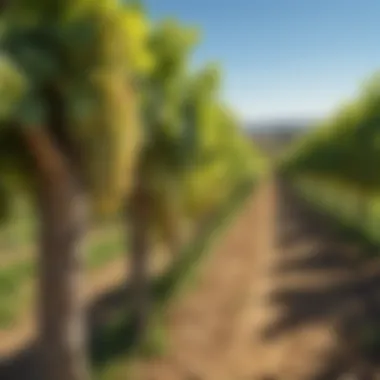
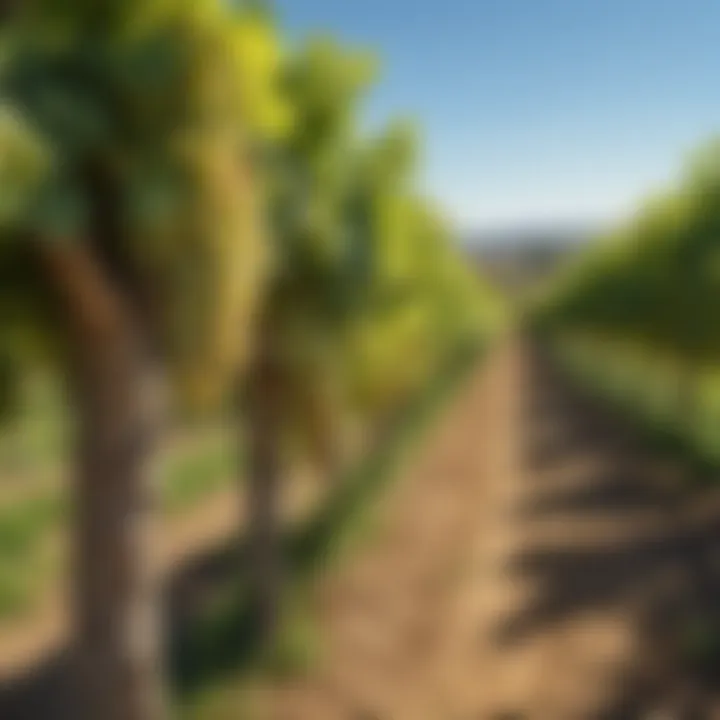
Intro
Riesling, a name that rolls off the tongue like a fine melody, is more than just a grape; it’s a journey through time and taste. Hailing originally from the cool-climate regions of Germany, this white wine varietal is known for its versatility that can either delight or challenge the palate. Whether sipped solo as a refreshing libation or paired meticulously with intricate dishes, Riesling boasts a profile that appeals to both novice drinkers and seasoned aficionados alike.
But what exactly is it about Riesling that makes it a popular choice? It could be the wide range of sweetness levels—from bone-dry to lusciously sweet—or the floral and fruity aromas that can transport you right to lush vineyards bathed in sunlight. The grape itself is often molded by the climatic conditions and the hands of the winemakers, creating a tapestry of flavors and aromas that encapsulate the essence of its growing region.
In this guide, we will dissect the many facets of Riesling, unraveling its origins, exploring its various styles, diving into food pairings, and examining producers that stand out in the crowd. Each sip tells a story worth knowing, and our aim is to lay out this delicious narrative in full view for your enjoyment and understanding.
"In every bottle of Riesling, there’s a whisper of the land, a melody of the weather, and a dance of craftsmanship."
So, grab your glass and prepare to dive deeper than ever into the world of Riesling—let's embark on this taste adventure together.
The Origins of Riesling
Riesling holds a prominent place in the world of wine, marked by a rich heritage and a unique blend of flavors that entice wine aficionados. Understanding its origins helps to grasp not only the characteristics of the wine itself but also the traditions and cultures surrounding it. By exploring where Riesling comes from—both historically and geographically—drinkers can appreciate the diversity of flavors and styles that stem from this single varietal.
Historical Roots
The history of Riesling traces back several centuries, with roots firmly planted in the vineyards of Germany’s Rhine Valley. It is believed to have emerged in the 15th century, possibly evolving from local grape varieties. Scholars often point to a document from 1435 that mentions a grape called "Rissling," hinting at the name's origins. In those days, Riesling was not just a grape; it was a symbol of status and quality. The wines made from Riesling gained fame throughout Europe, often described as the finest white wines available.
Traditionally, Riesling was valued for its ability to express the terroir, the unique environment where the wine grapes are grown. The grape's natural acidity paired well with the varying climates of its regions, allowing winemakers to produce wines that are both vibrant and complex. As time went on, Riesling found its way beyond German borders, attracting attention in places like Alsace, France, and later in regions like Australia and the United States. This migration not only spread the love for Riesling but also contributed to the development of different styles across the globe.
Geographical Significance
When one talks about Riesling, regions such as Mosel, Rheingau, and Pfalz come to mind as the heart and soul of this varietal. Each area boasts its own unique climate and soil type, which profoundly influence the grapes’ development.
- Mosel: Known for its steep, slate-covered hills, Mosel is often said to produce some of the best Rieslings in the world. The cool climate slows down ripening, resulting in wines with bright acidity and fragrant aromatics.
- Rheingau: This region enjoys a warmer climate relative to Mosel and is celebrated for its exceptional quality. Here, Rieslings are often more full-bodied, showing a different side of the grape.
- Pfalz: With more sunshine and a warmer climate, wines from the Pfalz tend to be richer and riper. The distinct migration of Riesling to this area has led to innovative winemaking techniques and exciting results.
Other countries have also staked their claim to Riesling. For instance, in Australia’s Clare Valley and Eden Valley, winemakers have tapped into the grape's potential, producing dry and off-dry styles that often exhibit ripe stone fruit characteristics. Meanwhile, New Zealand and the United States—particularly Washington State—are making notable strides, showcasing diverse flavor profiles that resonate with local palates.
Although Riesling's historical roots and geographical significance are vast, they weave a compelling story about the grape’s journey. An appreciation of its origins enriches the tasting experience, allowing wine enthusiasts to savor every sip with deeper understanding.
"Riesling is a window into its terroir, revealing the nuances of the land."
Appreciating these origins allows us to celebrate not just the wine but the labor, history, and artistry involved in every bottle.
Understanding Riesling Varietals
The exploration of Riesling varietals is not just a journey through flavors; it’s an invitation to appreciate the diverse expressions of a grape that has roots in various soils and climates. Each style of Riesling—be it dry, off-dry, or sweet—offers its own story, informed by the region, the winemaker's intent, and the specific conditions in which the grapes were grown. Understanding these distinctions is crucial for any wine enthusiast aiming to enhance their tasting experience and find the perfect match for their palate.
Dry Riesling
Dry Rieslings are often celebrated for their crispness and mineral-driven character. These wines tend to have less residual sugar, allowing the pure essence of the grape to shine through. One could say they are the straight shooters of the Riesling family.
When you take that first sip, you might encounter a symphony of flavors such as green apple, pear, and citrus, balanced against vibrant acidity. This acidity is what makes dry Riesling an excellent companion for a variety of dishes. A chilled bottle pairs wonderfully with seafood, light salads, and grilled chicken, lifting the flavors from the plate to your palate.
Germany’s Mosel Valley and the Alsace region of France are notable sources of high-quality dry Riesling. Here, the cooler climates help preserve the grape's natural acidity while infusing it with unique minerality from the rocky soils.
Off-Dry and Semi-Sweet Riesling
In the realm of off-dry and semi-sweet Riesling, you enter a world of balance. These wines often feature a touch of residual sugar, which rounds out the acidity and introduces a delightful sweetness. It's like adding a bit of sweetness to a complex narrative; it softens the edges while enhancing the overall experience.
This style of Riesling can be incredibly versatile. Flavors typical for off-dry Riesling include ripe stone fruits, honey, and even a hint of spice. The residual sugar provides an alluring richness, making it a perfect partner to spicy Asian cuisines, particularly dishes that might challenge traditional pairings, such as spicy Thai or Indian food.
Regions such as the Finger Lakes in New York produce outstanding examples of this style, where the interplay of sweetness and acidity creates a wine that is both refreshing and complex.
Sweet Riesling
Sweet Rieslings are often the life of the party, known for their lush, fruity profiles and aromatic intensity. These wines can be a real treat for those with a sweet tooth and offer a cornucopia of flavors, including apricot, dried fruit, and floral notes. A renowned style in this category is the late harvest Riesling, which features grapes that have been allowed to ripen longer on the vine, sometimes even rotting slightly to concentrate their sugars, a process known as botrytis.
Sweet Riesling shines not just on its own but as an exquisite complement to a variety of desserts, particularly fruit-based pastries, creamy cheeses, and even chocolate. The contrasting flavors create a dance on the taste buds—sweet against savory and rich against tart.
A notable example of sweet Riesling comes from Germany's Pfalz region, where rich, vibrant wines are produced with a complexity that can make your taste buds sing. The key with sweet Riesling is to find that balance of sweetness and acidity so it doesn’t overwhelming your palate.
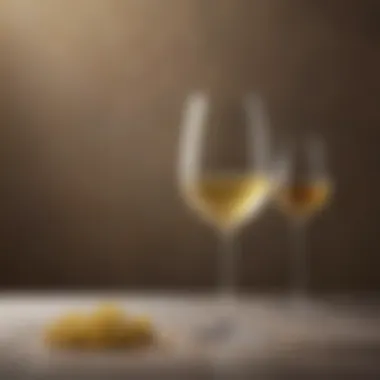
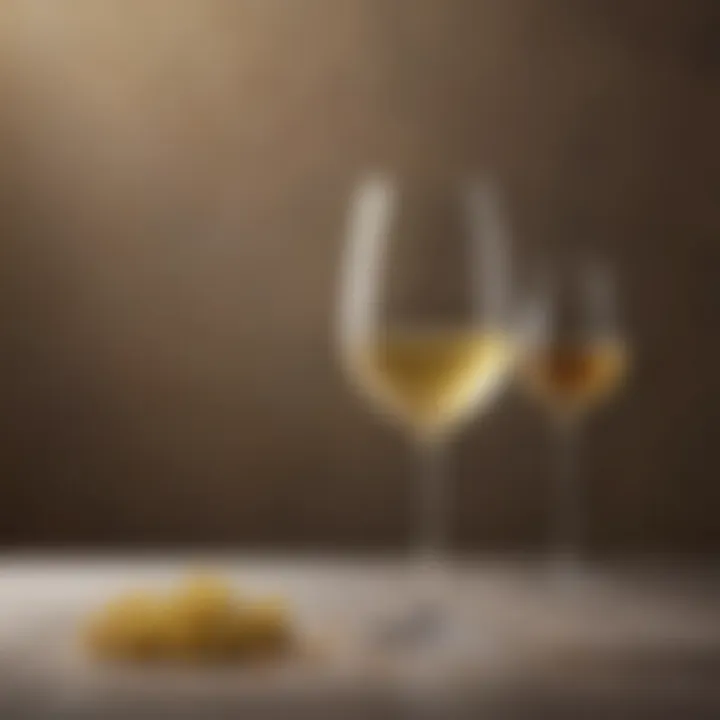
"Riesling is a grape that adapts beautifully to its environment, showing the character of its terroir in each bottle."
Navigating through the varietals of Riesling allows consumers to better align their choices with preferences and the occasions at hand. Each style enriches the palate, giving everyone—from the casual drinker to the seasoned connoisseur—a delightful adventure in a glass.
The Best Riesling Regions
When diving into the world of Riesling, the importance of its origin cannot be overstated. Various regions around the globe craft distinctive expressions of this captivating grape, each contributing unique characteristics that reflect the terroir and traditions. Selecting the right Riesling can be a delightful adventure, but understanding where it comes from is crucial for any wine enthusiast. Exploring the best Riesling regions allows us not only to appreciate the varied styles but also to enhance our appreciation for this versatile varietal.
Germany: The Heart of Riesling
Germany stands as the epicenter of Riesling production, where the grape thrives in cool climates and diverse soil types. The country boasts a plethora of river valleys, most notably the Mosel and Rheingau, where the vines benefit from reflective sunlight and moderating temperatures. German Rieslings often exhibit a balance of vibrant acidity and fruit sweetness, making them exceptional for both young and aged consumption. Labels like "Trocken" indicate dry styles, while terms such as "Kabinet" and "Auslese" define levels of sweetness. Each sip from these regions transports one through a flavor journey that is deeply rooted in meticulous winemaking traditions.
Alsace: A Unique Perspective
Over in Alsace, France, Riesling enjoys a reputation that is equally revered, though the style is markedly different from its German counterparts. Here, the focus lies on producing dry, aromatic white wines that pair splendidly with local cuisine. The region’s sunny, sheltered slopes and distinct geology create a setting for grapes that are rich in flavor and concentration. Alsace Rieslings are often marked by their mineral notes, floral aromas, and zesty fruit flavors, making them notable in the ecosystem of white wines. Additionally, uniquely labeled varietals help distinguish these wines from familiar German styles, offering a new narrative of depth and complexity.
New World Riesling
New World regions such as Australia, New Zealand, and the United States step outside the traditional styles, bringing fresh concepts to Riesling production. Each of these countries provides its own flair and interpretations, appealing to a wide spectrum of wine aficionados.
Australia
When it comes to Australian Riesling, it’s all about the Clare Valley and Eden Valley. These regions are known for their cooler climates that allow for grapes to ripen slowly. The highlight of Australian Riesling is often its crisp acidity and vibrant citrus notes. Many consider it a beneficial choice for its exceptional quality-to-price ratio, making high-quality Riesling accessible to many. The unique feature of Australian Riesling also lies in its age-worthy potential, with some bottles developing complex honeyed flavors over time, proving that great wine does not only come from the Old World.
New Zealand
New Zealand's contribution to Riesling can be summed up in one word: freshness. The cool coastal regions, particularly Marlborough, yield Rieslings that are lively and fruit-forward, often featuring vibrant tropical fruit notes intertwined with zesty acidity. This nation is quickly gaining recognition for crafting not just Sauvignon Blanc, but also delightful Rieslings that entice those who prefer a fruitier profile. The unique feature of New Zealand Riesling is its ability to embody clarity and expression, making it a popular choice for consumers looking to explore the varietal in a new light.
United States
The United States, particularly regions like Washington and California, is making its mark in the Riesling arena as well. The Pacific Northwest is particularly famous for its cool climate that produces wines with a perfect balance of sweetness and acidity. Washington Rieslings are renowned for their lush fruit flavors, ranging from peach to apple, often wrapped in a delightful mineral edge. The distinct advantage here is the ability for many artisanal producers to craft smaller batch wines, leading to unique flavor profiles not commonly found elsewhere. However, a challenge persists as not all consumers recognize Riesling’s diversity in the U.S., leading to a need for greater education on this captivating varietal.
"Naming a wine region or bunch of countries champions Riesling gives us an insight into how diverse and distinctly different these worlds can be, capturing a variety of flavors that are almost as broad as the number of wines themselves."
In summary, the best Riesling regions, whether from the traditional landscapes of Germany and Alsace or the emergent New World producers, display a rich tapestry of flavors waiting to be explored. From each corner of the globe, Riesling reveals itself uniquely, offering experiences that can suit any palate or occasion.
The Characteristics of Riesling
Understanding the characteristics of Riesling is critical for anyone looking to fully appreciate this exceptional varietal. These attributes not only define the wine but also influence how it pairs with various cuisines and occasions. It's the unique combinations of aroma and flavor that make Riesling a versatile choice for many enthusiasts. Knowing these distinctions can elevate your tasting experience, guiding you in selecting the right bottle for the right moment.
Aroma Profile
Citrus Notes
Citrus notes are a hallmark of Riesling's aromatic profile. Think of zesty lemon, ripe orange, or even grassy lime - each adds a refreshing vibrancy to the wine. This characteristic is invaluable for the overall appeal of Riesling, as it tends to awaken the senses. Wines high in citrus aroma can be perceived as more youthful and lively, creating an inviting experience for drinkers.
The appealing citrus component not only adds freshness; it also enhances the wine's acidity and makes it a favorable pairing for light seafood dishes or salads. A unique feature of citrus in Riesling is how it can change based on the grape's ripeness and the terroir. In warmer regions, the citrus may evolve into luscious notes of tangerine or grapefruit.
However, it is crucial to keep in mind that while citrus enhances the aroma, it may not provide the complexity that others, like floral or mineral notes, can offer.
Floral Elements
Floral elements in Riesling, such as honeysuckle and jasmine, add an exquisite layer of complexity. These aromas have a delicate charm that complements the fruitiness of the wine. Their charm lies in their ability to elevate Riesling's profile, drawing in even those unfamiliar with the wine world.
This particular characteristic not only makes Riesling a popular choice but also enriches its pairing potential with dishes like baked goat cheese or spicy curries. However, over-dominance of floral notes can be a double-edged sword; while enticing, it might overshadow other flavors for some purists.
Minerality
Minerality acts as the backbone for many Rieslings, providing depth and a rugged texture that can be surprisingly captivating. Think slate, wet stone, or even a hint of brine - these notes reflect the unique terroirs where Riesling thrives. The key characteristic here is the capacity to evoke a sense of place, showcasing its origins and heritage.
Minerality in Riesling can be a strong selling point, especially for those looking to explore more nuanced styles. It balances sweetness and acidity, making the wine both refreshing and layered. This feature becomes especially prominent in Rieslings from places with limestone-rich soils, adding to the overall experience. On the downside, some drinkers might find pronounced minerality a bit overwhelming if they prefer sweeter profiles.
Flavor Dynamics
Sweetness Levels
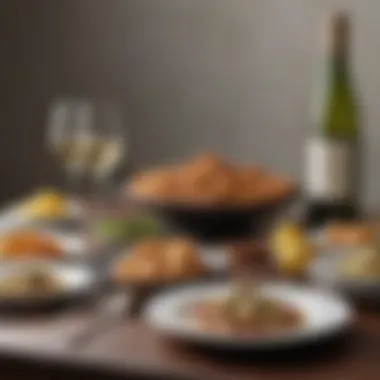
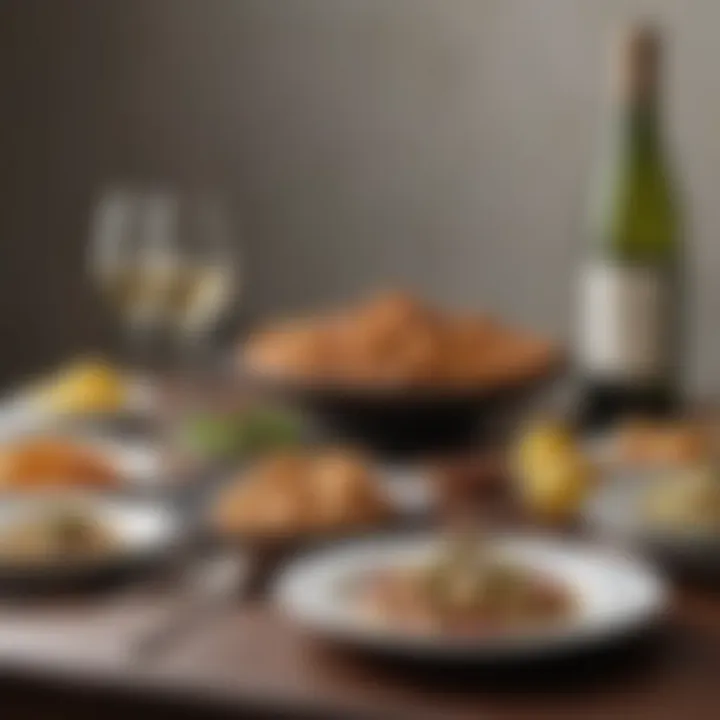
Riesling is famous for its diverse sweetness levels ranging from dry to ultra-sweet. This flexibility allows it to shine in many contexts, catering to different palates and preferences. Sweetness plays a pivotal role in producing some of the most beloved dessert wines, but even the drier varieties have a certain charm. The uniqueness of Sweetness Levels lies in its ability to provoke various flavor experiences within the consumer.
However, it is worth noting that not all sweetness is created equal; balance is key. A well-rounded Riesling maintains harmony between sweetness and acidity, making it universally appealing. Still, for those who prefer less sweetness, off-dry options may seem too cloying.
Acidity
Acidity is the lifeblood of any good wine, and for Riesling, it brings an extraordinary brightness that keeps the wine lively. High acidity complements sweetness, creating a lovely balance that many adore. This characteristic makes Riesling particularly well-suited for pairing with rich or fatty foods like duck or creamy dishes. The vibrant acidity also lends itself to aging potential, allowing complex flavors to develop over time.
Nonetheless, excessive acidity might deter those who prefer smoother mouth feels, making it important for consumers to find that sweet spot in the spectrum of acidity.
Body
Finally, the body of a Riesling adds an essential layer to its overall profile. Ranging from light and crisp to fuller-bodied versions, the body influences the mouth feel, perceived richness, and complexities of flavor. A light-bodied Riesling is perfect for warm summer days, while a fuller-bodied choice can stand up to hearty dishes.
This diversity presents both opportunities and challenges. A lighter bodied Riesling can refresh but may not hold up well with intense flavors. Conversely, fuller-bodied options could be too heavy for lighter fare. Balancing body with other characteristics ensures a richer tasting experience.
Notable Riesling Producers
When it comes to Riesling, the producers behind the bottle play a heavyweight role in shaping the wine's character. This section dives into both the iconic estates that have paved the way for Riesling’s reputation and the emerging labels that bring fresh perspectives to the table. Understanding the notable producers helps wine enthusiasts appreciate the subtleties in flavor, style, and tradition that each bottle offers.
Iconic German Estates
Germany truly stands at the forefront of Riesling production, being home to some of the most revered estates in the world. These producers combine heritage and modern techniques, resulting in wines that are often considered the benchmarks for the varietal.
One such estate is Weingut Egon Müller, which specializes in the Mosel region. Their wines are known for their elegance, balance, and remarkable aging potential. A bottle of their Schadekreis Riesling can transport you; you’ll find a cascade of stone fruit flavors accompanied by an almost ethereal minerality.
Another heavyweight in the arena is Dr. Loosen, also from the Mosel. The estate boasts a remarkable collection that presents a wide spectrum of Riesling styles, from dry to lusciously sweet. The Dr. Loosen Riesling is an excellent model of how the minerality from slate soils can integrate perfectly with vibrant fruit notes.
Lastly, let’s not overlook Von Kesselstatt, whose history traces back to the 14th century. Their quality-driven approach results in wines that reflect the terroir in notable ways, especially in their Schloss Marienburg Riesling.
Each of these estates has built a legacy based on quality and attention to detail, serving as a masterclass in the potential of Riesling.
Emerging Labels
While the iconic estates have set the bar high, emerging labels in the Riesling game are contributing to a lively transformation in the industry. These newer producers are often experimenting with sustainable practices, unique fermentations, and diverse terroirs, presenting Riesling in a fresh light.
A. Christmann from the Pfalz region is a prime example. Committed to organic farming, this winery has gained traction for its refreshing and authentic expressions of Riesling. Their 2019 Riesling Trocken strikes a balance of bright acidity and rounded fruit flavors, making it a perfect candidate for casual sipping or gastronomic pairings.
Venturing over to New Zealand, Ash Ridge Wines has began to attract attention with their bold approach to Riesling. Their wines exemplify how different climates can shape the personality of the grape. The Ash Ridge Riesling showcases not just tropical fruit flavors, but also a vibrant acidity, making it quite captivating.
Lastly, Domaine Weinbach in Alsace brings a unique interpretation of Riesling that deviates from traditional methods. Their commitment to biodynamic practices results in wines that are refined yet expressive. Snapshot of their Riesling Cuvee Théo reveals a bouquet of ripe pear and peach, underscored by a slight salinity that hints at the region's terroir.
Investing time in tasting wines from these emerging labels will not only broaden your Riesling repertoire but also support producers who are shaping the future of the varietal.
"Great wine is a conversation. The notable producers speak to the grape’s history, while the emerging labels narrate its future."
Understanding the producers behind the Riesling you drink enhances the tasting experience tremendously. Each bottle becomes a story, with its locale, caregiver, and method weaving into the narrative that enriches your palate.
Food Pairing with Riesling
Riesling, with its diverse range of flavor profiles and acidity levels, lends itself remarkably well to food pairing. Understanding the synergy between Riesling and various dishes enhances the overall dining experience. The wine's characteristics — from its sweetness to its acidity — can complement or contrast the flavors of the food, creating a dining experience that elevates both the meal and the wine. Not only does this pairing highlight the qualities of Riesling, but it also allows diners to explore culinary possibilities they might not have considered.
Asian Cuisine
The versatility of Riesling shines when paired with Asian cuisine, largely due to the variety of flavors and textures found in these dishes. Take, for instance, a classic Thai green curry; the wine's natural sweetness can balance out the heat while complementing the complex flavors of coconut and herbaceous notes. Similarly, dumplings, whether steamed or fried, are excellent companions, as the wine's acidity helps cut through the richness of the filling, refreshing the palate with each sip.
- Light Rieslings work particularly well with sushi or sashimi, as they amplify the freshness of the fish without overshadowing it.
- Off-dry Rieslings can masterfully navigate the sweet-and-sour elements of dishes like Vietnamese sweet and sour pork, offering a harmonious balance.
Spicy Dishes
Spicy dishes often present a challenge for winemakers and diners alike. However, Riesling emerges as a formidable match. The inherent sweetness in off-dry varieties acts as a foil to the heat, soothing the taste buds and allowing for a more enjoyable culinary experience. Imagine tucking into spicy Szechuan chicken or a fiery curry; a chilled glass of Riesling can help reduce the sting of the spice, enhancing the enjoyment of the meal.
"The beauty of Riesling lies in its dual nature, where sweetness meets vibrant acidity, making it an ideal partner for dishes that pack a punch."
Cheese Combinations
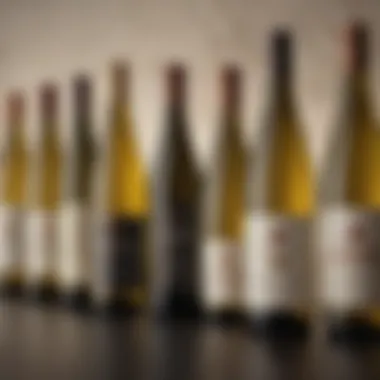
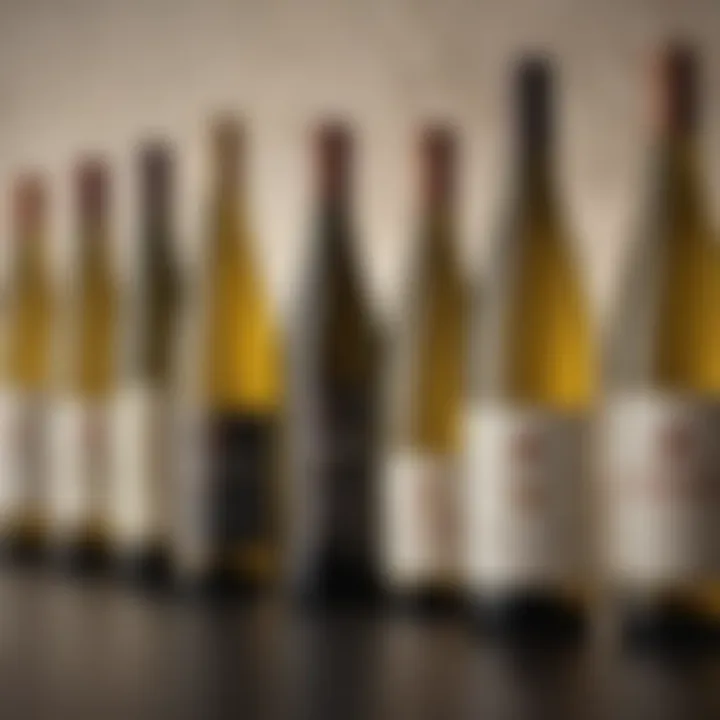
When considering cheese, Riesling is often an underappreciated star of the platter. Its acidity and fruitiness can complement a wide range of cheeses. Think of pairing it with creamy Camembert or pungent Roquefort. The richness of the cheese invites a contrasting sweetness from the wine, while the acidity works to cleanse the palate.
Some excellent cheese pairings include:
- Aged Goudas: The nutty flavor harmonizes beautifully with a fruity Riesling.
- Blue cheese: The sharpness can clash with many wines, but a sweeter Riesling balances its intensity.
- Goat cheese: The tartness of goat cheese paired with a vibrant Riesling creates a delicious explosion of flavors.
In summary, food pairing with Riesling is not just about finding a match—it's about creating a conversation between the wine and the food. Embracing the complementary nature of Riesling can lead to delightful culinary explorations, showcasing this varietal's remarkable adaptability.
Riesling Serving Recommendations
When it comes to really enjoying Riesling, serving it correctly can make a world of difference. If you think of wine like a symphony, proper serving guidelines are the conductor, ensuring each note plays beautifully for a harmonious experience. Understanding how to serve Riesling can elevate the enjoyment of this versatile white wine.
Optimal Temperature
The temperature at which Riesling is served can dramatically impact its flavors and aromas. Generally, the ideal serving temperature for Riesling ranges from 45°F to 55°F (about 7°C to 13°C).
- Colder for Sweet Styles: For sweeter Rieslings, a colder temperature tends to enhance the fruity and floral characteristics. Wines like those from the Mosel region benefit from being served at the low end of this spectrum.
- Slightly Warmer for Dry Varietals: On the other hand, dry Rieslings are best enjoyed when they are slightly warmer. This allows the more complex flavors and mineral notes to shine through. Finding that sweet spot—a little warmer than your refrigerator, but not too warm—can enhance the tasting experience.
"The right temperature allows for every note in the glass to resonate, creating a symbiotic relationship between your palate and the wine."
Glassware Selection
Choosing the right glass for Riesling is akin to picking the right outfit for an occasion; it can alter the perception of the wine significantly.
- Tumbler vs. Flute: Many people might opt for a flute out of habit, as they showcase bubbles beautifully for sparkling wines; however, for still Riesling, a wider tulip-shaped glass is often recommended. This shape allows the wine to breathe and gather aromatic complexities while concentrating the scents towards your nose.
- Material Matters: Crystal glasses often provide a better clarity and finesse. Yet, don’t feel compelled to break the bank; good quality glassware that feels comfortable in your hand can also do wonders.
Tasting Techniques for Riesling
Tasting techniques play a crucial role in experiencing the nuances of Riesling. Understanding the various methods can not only enhance your appreciation of this distinctive wine, but also help in discerning its unique characteristics. Not every sip is created equal; subtle differences in aroma, flavor, and texture come alive through careful tasting. When diving into a glass of Riesling, engaging the senses is key. This section explores two fundamental techniques—visual assessment and the nose and palate—each contributing to a fuller understanding of this remarkable varietal.
Visual Assessment
The first step in tasting Riesling involves a visual examination of the wine. As the saying goes, "we eat with our eyes first," and this holds true for wine as well. What you see can hint at what you might taste. Here are some factors to consider during the visual assessment:
- Color: Inspect the color against a white background. Young Rieslings tend to be pale straw to light green; as they age, they deepen into gold or even amber hues. This progression reflects not only age but also the style of the wine.
- Clarity: A clear wine generally signals proper filtration and cleanliness. Cloudiness might suggest that the wine underwent minimal intervention, which could affect your expectations.
- Viscosity: Swirl the wine gently and observe how it clings to the glass. The way it coats the sides can indicate the wine's sweetness level. Thicker legs might suggest a higher sugar content.
A thorough visual assessment sets the stage for the flavors that follow, preparing your palate for what’s to come.
Nose and Palate
Once the visual cues are collected, it’s time to engage your nose and palate. Smelling and tasting are intertwined experiences that bring the essence of Riesling to life. Here’s how to approach the nose and palate effectively:
- Nosing: Bring the glass to your nose and take several gentle inhales. This initial sniff unlocks a treasure trove of aromas ranging from citrusy lime to floral jasmine and even earthy mineral notes.
- Tasting: Take a small sip and let it linger in your mouth. Pay attention to the sweet-tart balance, acidity, and body. Consider these aspects:
- Identify Layers: Start by noting primary aromas, then look for secondary scents that might emerge after a few moments. This layered complexity is one of Riesling's charms.
- Sweetness: This can vary widely across Rieslings, so check how it plays with your palate. Is it a refreshing counterpart to the acidity?
- Acidity: High acidity gives Riesling its lively character. Notice how it interacts with the sweetness, enhancing the overall flavor.
- Finish: Finally, consider the aftertaste. A long finish often hints at a higher quality wine.
Understanding these tasting techniques allows you to unlock the secrets of Riesling more fully, ensuring your experience transcends beyond simply drinking a glass. As you refine your approach, you’ll find that each Riesling offers a new journey worth exploring.
The Future of Riesling
Riesling wine, with its remarkable versatility and nuanced flavor profile, has captured the hearts of many. However, the future of this cherished varietal remains at a crossroads, shaped by evolving consumer preferences and environmental challenges. In this section, we will explore two key facets: trends and innovations that are propelling the Riesling industry forward and sustainability practices that are becoming increasingly essential in wine production.
Trends and Innovations
As we glance forward, it's vital to recognize the notable trends shaping the future of Riesling. One such trend is the shift toward alternative fermentation methods. Winemakers are experimenting with natural yeasts and minimal intervention techniques, tapping into the grape's intrinsic characteristics. For example, some Rieslings now embrace oxidative aging, producing intricate flavors that deviate from traditional styles. This departure caters to a growing audience of adventurous palates eager for novel tasting experiences.
Additionally, the regional diversity of Riesling is gaining traction. While German Rieslings continue to be the benchmark, the prominence of New World producers—such as those in the United States and New Zealand—is steadily increasing. American Rieslings harvested from cool climates like Washington State or finger pickle Lakes offer delightful new interpretations. The rise of these diverse regions showcases an exciting future, where Riesling enthusiasts can explore a mosaic of flavors, influenced by different terroirs.
"Innovation in winemaking often means going back to the roots, respecting traditions while daring to push boundaries."
Another noteworthy trend is the increasing focus on low-alcohol Rieslings. In a world where health-conscious choices are at the forefront, these lighter styles are finding their place. They not only offer an enjoyable drinking experience but also align with modern lifestyle preferences that emphasize moderation. This pivot promises to draw in a fresh audience.
Sustainability Practices
The wine industry, including Riesling producers, faces significant pressure to adopt sustainable practices. As climate change continues to affect viticulture worldwide, winegrowers are embracing sustainable agriculture techniques. Some producers are rethinking their approach to farming, favoring organic or biodynamic practices that nurture soil health and biodiversity. This not only enhances the quality of the grapes but also contributes to a healthier ecosystem.
Water management is a critical consideration as well. Many Riesling producers are implementing water conservation methods such as drip irrigation and rainwater harvesting. This conscious use of resources helps protect vineyards from drought conditions, an increasingly pressing concern.
Furthermore, packaging is evolving too. A number of winemakers are opting for eco-friendly bottles and closures. Lighter glass bottles reduce carbon footprints during transportation, while screw caps are making a comeback due to their ease of use and resealability. The culmination of these practices indicates a promising trajectory for Riesling's sustainability, making it not just a delightful choice but a responsible one.







